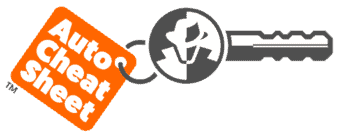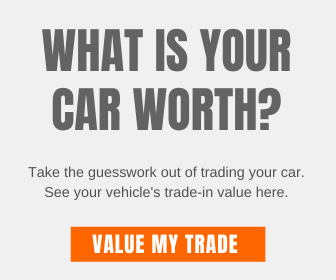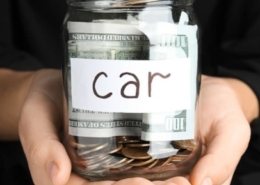How to Handle a Vehicle Recall Efficiently
Got a car recall? Don’t stress—here’s how to handle it quickly and safely.
When life hands you lemons, you make lemonade. But what if life hands you a recall notice for the car you’ve just grown attached to? Suddenly, your trusty vehicle—your daily companion on errands, road trips, and commutes—feels less reliable. But before you spiral into panic or tears or throw your hands up in exasperation, remember this: a recall isn’t a sign your car’s about to fall apart. It’s quite the opposite.
Key Takeaways
- Stay Calm, Don’t Panic: A recall means the manufacturer has found a problem and is fixing it.
- Contact Your Dealer Immediately: Reach out to your dealer to get clear instructions and schedule the repair.
- The Fix is Free: Yes, it’s free. Recalls don’t cost you a dime; getting them fixed promptly is essential.
A recall means the manufacturer cares enough to step in before a small problem becomes significant. Handling a car recall can be simple, straightforward, and, believe it or not, even a little empowering—like you’re part of an undercover mission to keep yourself and others safe. It’s a reminder that sometimes, the system works in your favor. Manufacturers issue recalls for a reason: to correct a flaw that could affect your safety or your vehicle’s performance.
Before buying a car, you should check for any open recalls to avoid surprises down the road. But if you receive a vehicle recall while owning a car, everything will be okay. So, take a deep breath, and let’s walk through exactly what to do if you receive one of these notices.
Car Buying Tip: Shopping for a new car? Prices can be steep, but you can still find a great deal by requesting free dealer price quotes to compare local dealership offers to guarantee you pay the lowest price in your area.
Table of Contents
What Is a Car Recall?
A car recall is like getting a letter from the car gods telling you something went awry in making your vehicle. This means there’s a defect that isn’t quite right that could affect your car’s safety or performance. And rather than ignoring the issue (which we’ve all been tempted to do), the carmaker has decided to take responsibility and offer to fix it, typically free of charge.
Manufacturers issue recalls when they discover that a car part doesn’t meet federal safety standards or could pose a danger to drivers and passengers. These recalls can involve anything from faulty airbags to brakes that don’t work properly to something as odd as a seatbelt buckle that comes undone at the worst moment.
How Are Recalls Issued?
Recalls are usually the result of investigations conducted by the National Highway Traffic Safety Administration (NHTSA) or the car manufacturers themselves. When they spot a flaw, they send recall notices to owners to return their cars to the dealership for repairs. It’s a formal way of saying, “Oops, we missed something, and we’d like to make it right before you get into serious trouble.”
What Should You Do When You Get a Recall Notice?
First, don’t overreact. Your car isn’t about to explode, nor will it turn into a pumpkin at midnight. A recall notice is a proactive step; you’ll have time to fix the issue. Take a deep breath and read the letter or email thoroughly.
Step 1: Read the Recall Notice Carefully
This notice will explain the problem in detail, tell you which part of the vehicle is affected, and offer instructions on how to proceed. Pay close attention to the following:
- The defect description: What exactly is wrong?
- The risk: Could it affect your safety, or is it a minor issue?
- Next steps: What does the manufacturer recommend you do next?
Contact Your Dealership
Now that you know what’s wrong with your vehicle, it’s time to take action. Don’t wait for things to worsen; don’t put off repairs thinking, “I’ll get to it one day.” That day could lead to serious problems if ignored.
Step 2: Reach Out to the Dealership
Your car’s recall notice will include contact information for the nearest dealership. Call them up and make an appointment. Explain that you’ve received a recall notice and ask when to bring your car in for repairs.
Step 3: Prepare for the Repair
In many cases, dealerships will handle the recall repair immediately if parts are available. However, sometimes, you may need to wait for parts to be ordered, mainly if a large recall affects thousands of vehicles. When you call, ask how long the repair will take and whether you need to arrange alternate transportation.
- How to Buy a New Car Below Factory Invoice Price – True dealer cost and the factory invoice price are not the same… dealer cost can be much lower.
- Figure a Fair Profit New Car Offer – How to calculate a fair profit new car offer.
- How to Buy a New Car Online – Not sure where to start? Use my step-by-step guide on how to buy a new car online.
Understanding the Repair Process
The good news is that manufacturers must legally cover all costs associated with the recall. That’s right—no bill at the end of this saga. They’ve identified a problem and make it right at no charge to you. The dealership will fix the issue, and you’ll be back on the road soon.
Step 4: Drop Off Your Vehicle
When you drop off your car for repair, the service department will replace the defective part. Depending on the severity of the recall, the repair might be as quick as a couple of hours or take a few days.
Step 5: Ask Questions
Don’t be shy. Ask about the recall, the work they’ll be doing, and what exactly they’re fixing. It never hurts to know more about your car and its inner workings, even if you don’t fancy yourself a car expert.
Real-Time Bargain Hunting: Turn to Edmunds for instant access to the latest and greatest local deals, saving you time, money, and stress.
Can You Drive a Car That’s Been Recalled?
This depends entirely on the recall itself. If the problem is minor, like a faulty light bulb or a seatbelt warning that won’t turn off, you might be able to drive your car for a bit before repairs. However, if it’s a significant safety risk (like brakes or steering), you should stop driving the vehicle until the dealership fixes it.
If you’re unsure, refer to the recall notice. It will indicate whether the problem requires immediate attention or if you can safely drive your car while waiting for the repair.
What If You Miss the Recall Notice?
It happens—you move, change email addresses, or toss the letter in a pile of junk mail. Don’t worry; you can still check to see if your car has an active recall. Visit the NHTSA or your car manufacturer’s website, where you can enter your car’s Vehicle Identification Number (VIN) to see if your car is part of a recall.
If you’re unsure, you can also contact your dealership directly, and they can look up the recall status for you.
How to Check for Open Recalls
Even if you didn’t receive a recall notice in the mail, you can still check if your car has any open recalls. Here’s how:
- Use the NHTSA website: Go to the National Highway Traffic Safety Administration’s website and enter your car’s 17-character VIN. This will bring up any current recalls for your specific vehicle.
- Check with the manufacturer: Most manufacturers have a recall section on their website where you can search by VIN.
- Ask your dealer: If you’re not the first owner of your car, or if you think you may have missed a notice, you can always ask your dealer to look up any recall information.
How Long Does a Recall Take?
The time it takes to repair your car depends on the type of recall. Minor repairs can often be completed in hours, while more significant issues may take longer if parts need to be ordered. Ask the dealership for a rough timeline when scheduling your appointment, and plan accordingly.
Frequently Asked Questions
What if I ignore the recall?
Ignoring a recall puts you and your passengers at risk. The manufacturer identified a safety issue, and failing to get it fixed could lead to accidents or further damage to your car. Plus, unresolved recalls can affect your vehicle’s resale value.
Will I be charged for a recall repair?
No, manufacturers cover all costs for recall-related repairs. Whether you go to your dealership or a certified repair facility, it’s completely free.
Can I sell my car if it’s under recall?
Yes, you can still sell your car. However, it’s a good idea to notify potential buyers of any outstanding recalls. Plus, repairing the recall before selling could increase your car’s value.
Is my car safe to drive with an open recall?
This depends on the nature of the recall. Some recalls are for minor issues, while others involve significant safety risks. Always check the recall notice or consult with your dealership to find out.
How will I know when the recall repair is complete?
Once the dealership finishes the repair, they’ll notify you that your car is ready to be picked up. It’s essential to confirm with the service department that all recall-related repairs have been completed.
Can I choose a different repair shop?
For a recall, it’s best to go to a certified dealership or repair facility authorized by the manufacturer. They’ll have the right parts and expertise to fix the problem.
Conclusion: How to Handle a Car Recall
Handling a car recall might initially seem overwhelming, but it’s a normal part of vehicle ownership. Recalls are designed to fix potential safety issues before they become serious problems, and manufacturers offer these repairs at no cost to you. Your safety is the priority, so there’s no reason to delay.
When you receive a recall notice, contact your dealership, schedule the necessary repair, and let the professionals take care of the rest. Think of a recall not as a sign of car failure but as a proactive step to ensure your vehicle runs safely and smoothly.
Once it’s resolved, you can return to the road knowing that you and your car are in good hands.
















